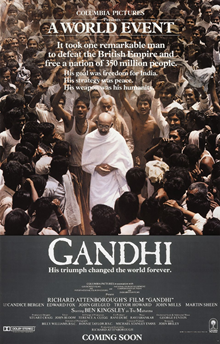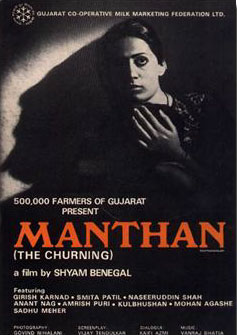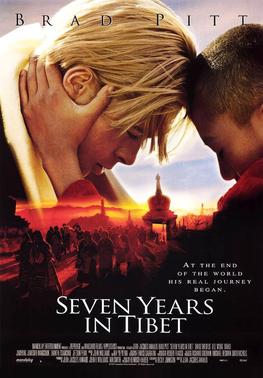
Director: Mick Jackson (2010, English, 107 mins)
Reviews: RottenTomatoes (100%), IMDB (8.3), Wikipedia, Amazon.
Similar movies: biopic, illness, true story.
Summary: A touching and inspiring true life story of an autistic woman named Temple Grandin who overcame a series of challenges to become a Professor in Colorado State University. Temple had an aptitude for science. She did a Ph.D. in Animal Husbandry, designing cattle ranch systems for humane treatment of animals which also improved profitability. By the time I'd finished watching the movie, I had been moved to tears a few times. I also felt humbled and inspired. Acting is superb.
1. The movie shows three aspects of Temple's autism really well: how her mind is different from others, the challenges she faces in social interactions and techniques she uses to soothe herself when she's stressed. She invented the 'hug machine' or 'squeeze box' at age eighteen, which is now popular among autistic kids who do not like to be touched by people. Many scenes show how Temple processes visual and audio input: as a series of inter-connected pictures, whose details remain in her mind forever. These abilities enable her understand how animals process information, helping her design cattle ranch equipment and processes.
2. The movie does not make Temple look more human-like than she really is. Sci-fi and anime movies imbue everybody from animals, plants, vehicles, bots and aliens with human like feelings and sensitivity. Temple Grandin remains Temple Grandin throughout the movie. She is unable to connect emotionally to people. That is how she always has been.
3. The movie shows Temple's doggedness in pursuing projects in the real world. She will not take 'no' for an answer, despite her social awkwardness. A memorable quote from the movie, which Temple uses many times to overcome hurdles: “Think of something as a door, a door that is going to open up onto a whole new world for you. And all you need to do is decide to go through it.” Temple applies this mantra multiple times. The movie is worth watching for these scenes alone!
Temple also gave a TED talk: The World Needs All Kinds of Minds.

Director: Richard Attenborough (1982, English, 191 mins)
Reviews: RottenTomatoes (89%), IMDB (8.1), Wikipedia, Amazon, Roger Ebert.
Watch online: NetFlix.
Similar movies: biopic, true story.
Summary: Yet to write.

Director: Shyam Benegal (1976, Hindi, 134 mins)
Reviews: IMDB (7.5), Wikipedia.
Similar movies: biopic, true story.
Summary: Yet to write.

Director: Jean-Jacques Annaud (1997, English, 136 mins)
Reviews: RottenTomatoes (61%), IMDB (6.9), Wikipedia, Amazon, Roger Ebert.
Similar movies: biopic, true story.
Summary: Yet to write.

Director: Brian Helgeland (2013, English, 128 mins)
Reviews: RottenTomatoes (78%), IMDB (7.6), Wikipedia, Amazon.
Similar movies: biopic, true story.
Summary: The movie "42" is the true life story of Jackie Robinson, the first black player in major league baseball in USA. Overall, the movie is okay. I felt that the storyline had sudden jumps, it felt disconnected. Still, I love the movie for its strong message of non-violence.
An inspiring scene from the movie "42" that gave me goosebumps is here. Harrison Ford talks passionately about non-violence. It's 1947 and he's about to sign up Jackie Robinson, the first black baseball player in major league in USA. Harrison Ford's dialogue:
"People aren't gonna like this. They're gonna do anything to get you to react. Echo a curse with a curse and they'll hear only yours. Follow a blow with a blow and they'll say, 'The negro lost his temper'. Your enemy will be out in force and you cannot meet him on his own low ground. We win with hitting, running, fielding -- only that! We win if the world is convinced of two things: that you are a fine gentleman and a great baseball player!"

Director: Julian Schnabel (2007, French, 112 mins)
Reviews: RottenTomatoes (93%), IMDB (8.1), Wikipedia, Amazon, Roger Ebert.
Similar movies: biopic, illness, true story.
Summary: An artistic, sentimental movie that won a bunch of awards at various film festivals. The movie is a true life story of Elle editor-in-chief Jean-Dominique Bauby who suffered a stroke at age 43. He woke up 20 days later, only to discover that he was facing a condition called the 'locked in syndrome'. Jean-Do's mind was fully functional but he could not move his body except his left eyelid. A speech therapist devised a system of communication. She would speak French letters in decreasing order of frequency. The corresponding English letters are E, T, A, O, N, S, H, R, D, L, ... Jean-Do would blink an eye when the correct letter was spoken. Through this communication technique, Jean-Do dictated a 131-page book titled The Diving Bell and The Butterfly: A Memoir of Life in Death (131 pages, 1998). Remarkable! Isn't it?
Jean-Do's book is a first person narrative. So is the movie. Many scenes are shot from Jean-Do's perspective, limited to his field of vision and punctuated by eye blinks. In his book, Jean-Do describes three things: his real life experiences as a quadriplegic, his memories and his imagination. After his stroke, Jean-Do's real life experiences are with people who keep in touch with him: his doctors, his hard-working therapists, his wife, his kids, his aged dad, a former lover and some colleagues. They all love him. Some pray for his well being. His memories are about his life as a high flying editor of Elle (a fashion magazine), his family and his former lovers. Jean-Do's imagination reflects his abstract thoughts about his inability to move his body but his ability to move his mind freely.
What does the title of the book 'The Diving Bell and The Butterfly' reflect? Jean-Do compares his body to a 'diving bell', a heavy metallic bell-like chamber sunk into oceans for exploration. He compares his mind to a butterfly that dances around joyfully, savoring beautiful experiences :)

Director: Jeffrey Karoff (2013, English, 39 mins)
Reviews: RottenTomatoes (N/A), IMDB (7.2), Wikipedia, Amazon.
Similar movies: biopic, documentary, true story.
Summary: Ra Paulette is a sculptor who has been digging massive, ornately carved, sandstone caves in New Mexico, USA, for over 25 years. He calls them "wilderness shrines", massive in scale, poetic in design. He uses only hand tools like shovels, pick axes and scrapers.
A documentary film maker followed Ra for 3 years as he dug and made the Oscar nominated Cave Digger (39 mins, 2013) — available here. Ra's philosophy is heartwarming (see excerpts from the documentary below).
Interviewer: "Would you say that you are obsessed?"
Ra: "Would you call a child being obsessed with play? You wouldn't use that word - obsessed. You know, when you're doing something that you love and are drawn to it, you wanna do it all the time!"
Ra: "I see this as an environmental project. I'm trying to open up people's feelings."
Ra: "It has a lot to do with the juxtaposition of opposites: the sense of being underground with the light streaming in; the intimacy of being in a cave, yet the columns end up very large, sometimes thirty to forty feet high."
Ra: "Most of the wonder I feel is in the actual making of the cave. Once they are made, I move on (with a chuckle) if I want fresh wonder"
Interviewer: "Does it ever get lonely out here? Doing all this work?"
Ra: "I'm never lonely"
Interviewer: "If there is one simple thing that you wanted people to take away from being in one of your caves, what would it be?"
Ra: "At least, a moment ... or a length of time in which they had a deeper feeling and a deeper understanding of themselves and life."

